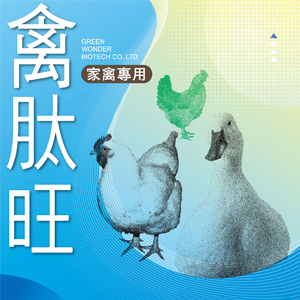Dr. Tide (For Poultry)
In high-density farming environments, stress often arises from factors like feed alterations, shifts in surroundings, climate fluctuations, and animal injuries. Additionally, frequent use of highly nutritious feed and vaccines can weaken animals' immune systems, leading to declining health and increased elimination rates. Consequently, growth performance may fall short of anticipated results.
"Dr. Tide": Tailored for poultry, Dr.Tibe specialized additive aims to mitigate stress, improve animal health and immunity, and minimize the impact of pathogenic microorganisms. The ultimate goal is to optimize farming efficiency.
"Dr. Tide": Tailored for poultry, Dr.Tibe specialized additive aims to mitigate stress, improve animal health and immunity, and minimize the impact of pathogenic microorganisms. The ultimate goal is to optimize farming efficiency.
- Company NameGREEN WONDER BIOTECH CO,. LTD.
The notable characteristics of PoultryPeptiBoost include:
A. Resistance to stress, thereby reducing stress-related illnesses.
B. Boosting the immune system, suppressing pathogens, and diminishing instances of diarrhea and dysentery.
C. Facilitating swift recovery from illness, promoting speedy and robust growth.
D. Containing probiotics that enhance the proliferation of beneficial bacteria within the body.
E. Enhancing digestive absorption capabilities, promoting animal health, and elevating breeding rates.
F. Exhibiting antioxidant and anti-inflammatory properties.
G. Ameliorating the odor in livestock facilities and decreasing instances of respiratory ailments.
H. Reducing veterinary expenses, enhancing feed efficiency, and augmenting farm revenue.
A. Resistance to stress, thereby reducing stress-related illnesses.
B. Boosting the immune system, suppressing pathogens, and diminishing instances of diarrhea and dysentery.
C. Facilitating swift recovery from illness, promoting speedy and robust growth.
D. Containing probiotics that enhance the proliferation of beneficial bacteria within the body.
E. Enhancing digestive absorption capabilities, promoting animal health, and elevating breeding rates.
F. Exhibiting antioxidant and anti-inflammatory properties.
G. Ameliorating the odor in livestock facilities and decreasing instances of respiratory ailments.
H. Reducing veterinary expenses, enhancing feed efficiency, and augmenting farm revenue.












__24G16nrEmc.png)







